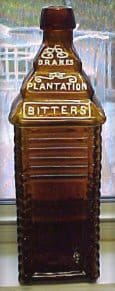 What is an Arabesque Drakes Plantation Bitters?
What is an Arabesque Drakes Plantation Bitters?
20 December 2011 (R•110614)
![]() I thought I would take a moment to explain and picture the primary differences between the rarer mold D 102 Arabesque Drakes Plantation Bitters and other Drakes Plantation Bitters which do not have the rectangle around the word BITTERS. The Arabesque Drakes also has a scroll motif as noted in the picture below. These Arabesque Drakes are typically very weakly embossed bottles and are tough to find.
I thought I would take a moment to explain and picture the primary differences between the rarer mold D 102 Arabesque Drakes Plantation Bitters and other Drakes Plantation Bitters which do not have the rectangle around the word BITTERS. The Arabesque Drakes also has a scroll motif as noted in the picture below. These Arabesque Drakes are typically very weakly embossed bottles and are tough to find.
There was a nice grouping of them (I believe six or so) in the last Glass Works Auction (I pictured two GW bottles below). See related article: One of the Crudest Drakes You Will Ever See
The Carlyn Ring and W.C. Ham listing in Bitters Bottles is as follows:
D 102 DRAKE’S PLANTATION BITTERS, Circa 1862 – 1870,
// s // motif arabesque / DRAKES / motif arabesque / PLANTATION /
BITTERS enclosed in a rectangle // 3 tiers of thatching // tier of thatching
/ PATENTED / 1862 / tier of thatching // 3 tiers of thatching //
10 x 2 7/8 (6)
Square cabin, LTC, Applied mouth, Amber, Puce and Amethyst-Rare;
Green-Extremely rare
17 logs including the base, 6 logs over the label panels
From the great web site of Jeff and Holly Noordsy. These next two (2) pictures and copy description is from a bottle that was sold on their web site. I think the color and embossing of the Arabesque Drakes is spectacular. The bottle story is cool too!
[From Jeff and Holly Noordsy] Over years there has been some question as to the appropriateness of the term “attic mint” but in this instance, the usage cannot be questioned. While working on a job site in central New Hampshire a local friend had the unenviable task of tearing out a plaster and lath 2nd floor ceiling. Perhaps owing to the odious nature of the job good fortune smile on him when out tumbled a half-dozen bottles, including a GVIII-16 sunburst (which he will not part with) and this beautiful arabesque Drakes. Although it is not my preference to do so, I decided to “clean” the bottle in hopes of determining the color (a “before” picture is included) and the purists among you will be happy to hear that I saved both labels (which will be included in the listed price) while at the same time revealing a startlingly beautiful yellow bottle with strong apricot tones. Arabesque Drakes in this color are RARE and although the bottle literally bounced on the floor when it fell from the attic, it survived with nary a scratch.
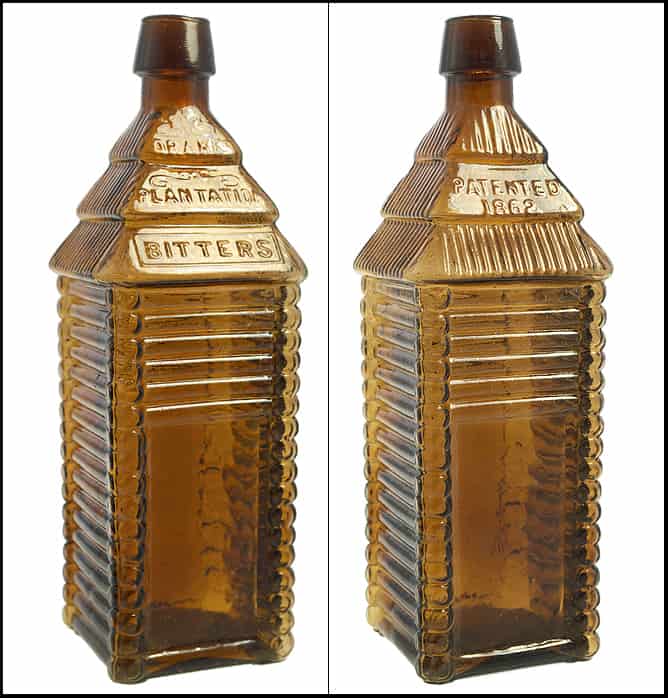
(Motif Arabesque) / “ST / DRAKE’S / PLANTATION / BITTERS – PATENTED / 1862”, (Ring/Ham, D-102), New York, ca. 1862 – 1875, light pinkish topaz 6-log cabin, 10”h, smooth base, applied tapered collar mouth. Pristine, brilliant glass, highly whittled, scarce and desirable arabesque variant. Because of the detail of the embossing, the arabesque Drake’s have always commanded a premium price. Over the years we have sold a reasonable number, but none in this spectacular color! In our opinion this is the finest example, and finest color, of any we’ve had the privilege of offering. – Glass Works Auctions #105

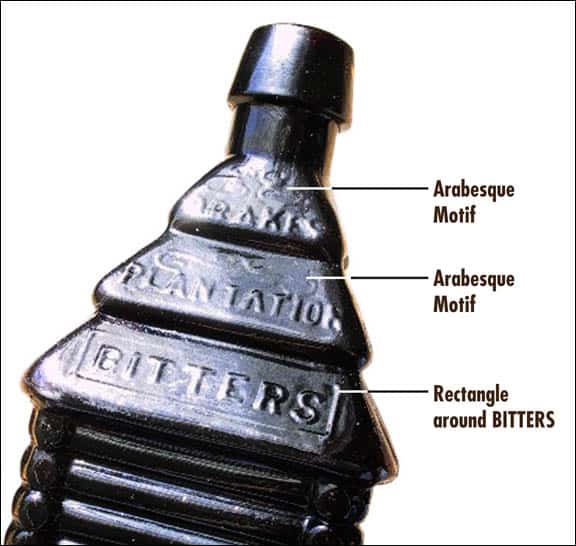
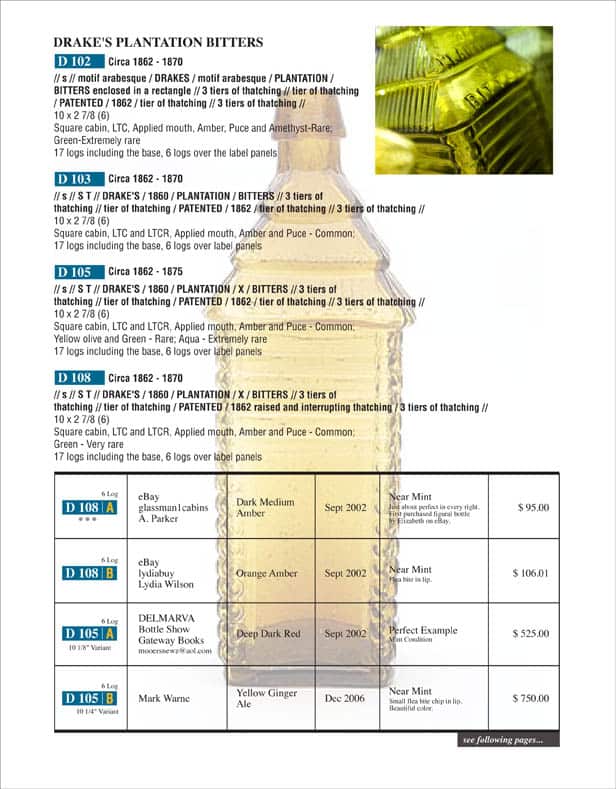
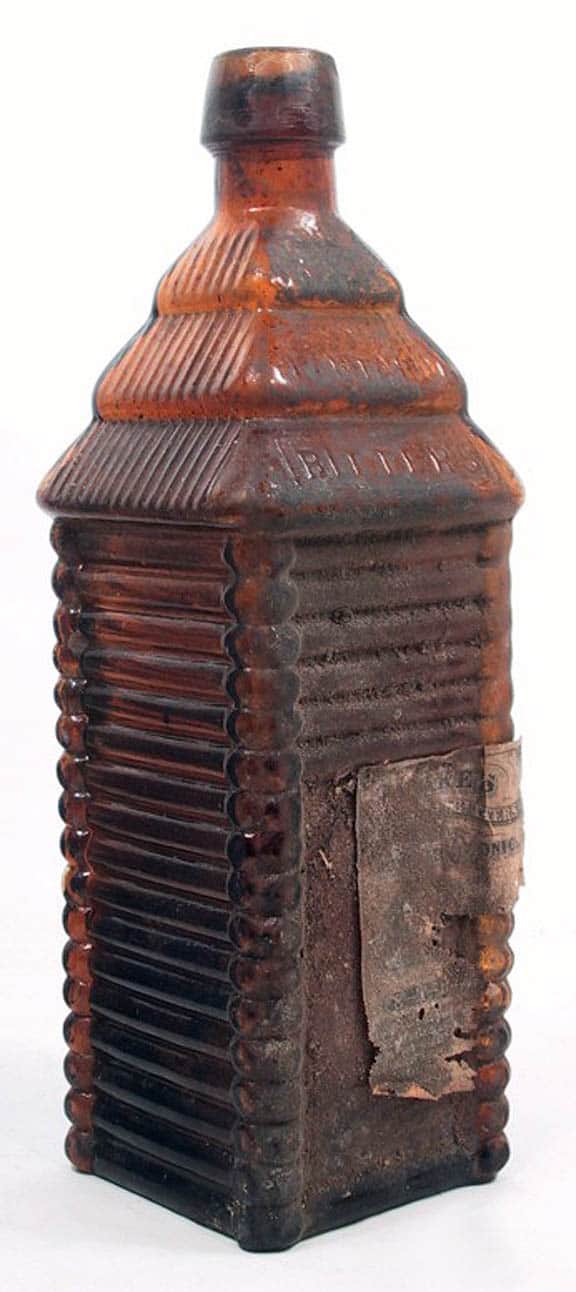
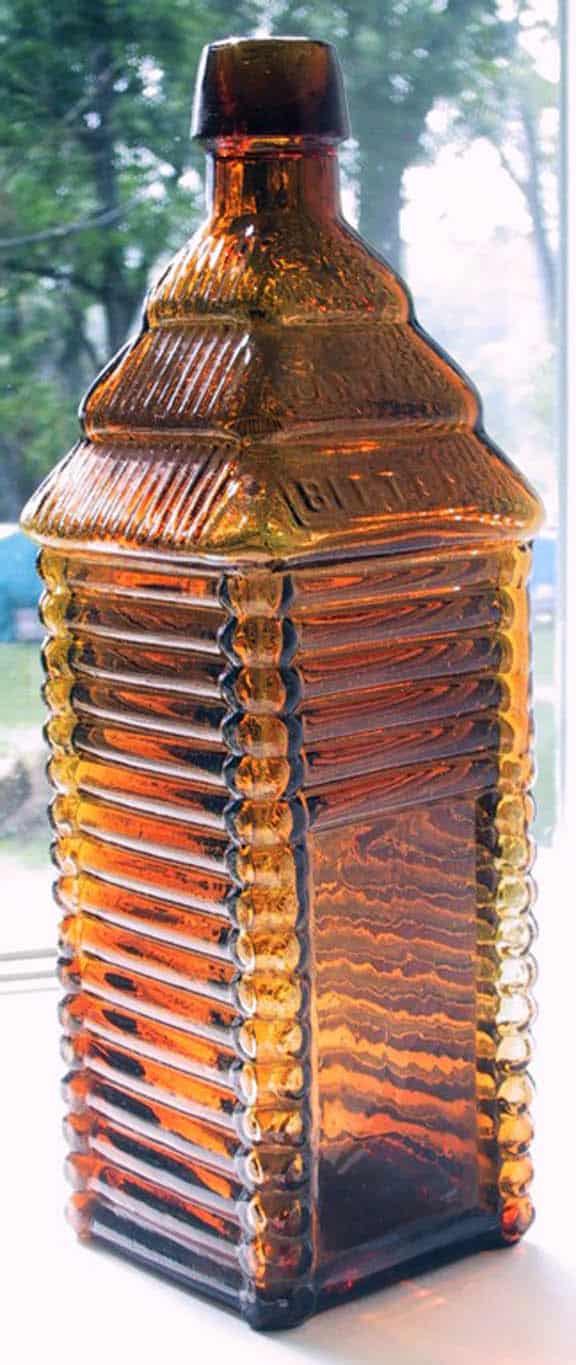
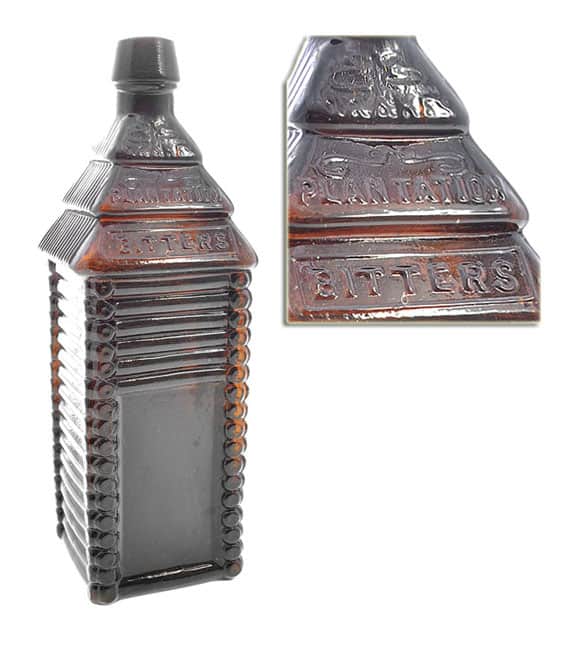
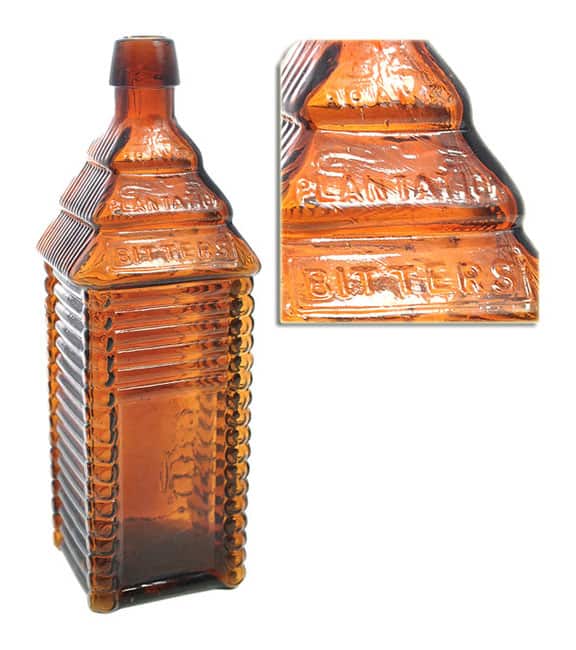







The best part of the story is that it is 100% true!
Great FIND story Jeff! The arabesque is, hands-down, my favorite Drakes mold(Presently have two: a deep grape- amethyst and a med-lt. salmon puce).
Yes the mold most often is weakly embossed and the best strike I’ve ever seen, is on a deep Raspberry-Grape example just traded to Mike Henness( It’s for sale).
The recent Glass works prices were at bargain levels for these rare, desirable arabesques!
Can we please strike the word “strike” from the bottle lexicon? Bottles are molded/impressed/embossed but not struck, as with a coin. Subtle, perhaps, but IMHO, an important distinction.
That is a great find Jeff N… where in New Hampshire was it found? 🙂 I need more friends in the renovation business!
A bit off the topic… but I will say that the term “strike” has always bothered me as well, and it seems to be used quite often these days. The embossing of a mold-blown bottle has always been referred to as “mold impression”.
Yes Jeff B… I do think the Arabesque Drakes in Glassworks were still very reasonably priced. Wonderful range of colors for that mold! Even this early New England glass collector was bidding on them!
I’ve noticed another interesting characteristic of several Arabesques I’ve handled; that the usually heavy applied tops have a “funneling” inside the lips, where the I.D. becomes noticeably narrower down toward the bottom. Anyone else notice this?
I wonder if the Arabesque Drakes variant was possibly blown in only one particular glass house and which one it might have been. Any guesses Mike G. or Jeff N. ?
Not something I’ve noticed Jeff but I’ll be on the lookout in the future. With the relative scarcity of Drakes blown in this particular mold, yes, I would believe it likely that they were produced by one or at most a very small number of glass houses. I’ve not heard of any archeological evidence as to the potential origins of Arabesque Drakes but the colors in which they are found lead me to ASSUME that they were blown in South Jersey and/or Baltimore. Pure conjecture though:)
Personally, I have no opinion on the matter since I’ve not had the opportunity to examine in detail any Arabesque Drakes. But once again, as a general observation, I’m struck by the usefulness of the Peachridge Glass website for bringing together knowledgeable facts, ideas and opinions regarding antique bottles.
Happy holidays to all!
Great story and nice Drake’s also !
Thanks Jeff N.
Thanks Jeff N. for thoughts on Arabesque origins. Color IS probably the best clue as to where blown and Balt./ S. Jersey would sure fit. Happy Holidays to you ‘n Holly!